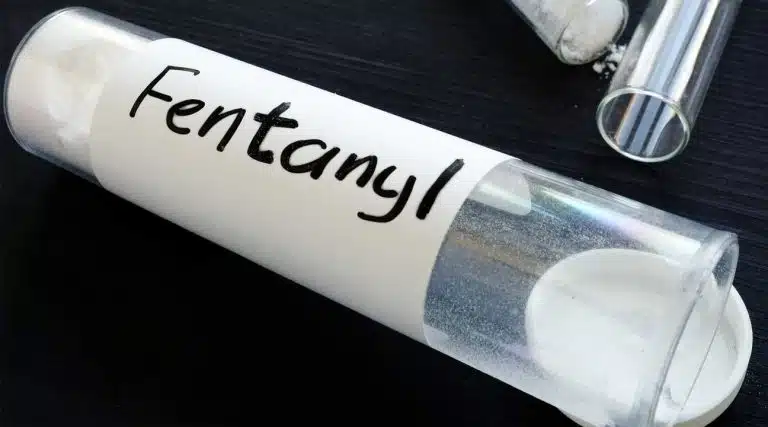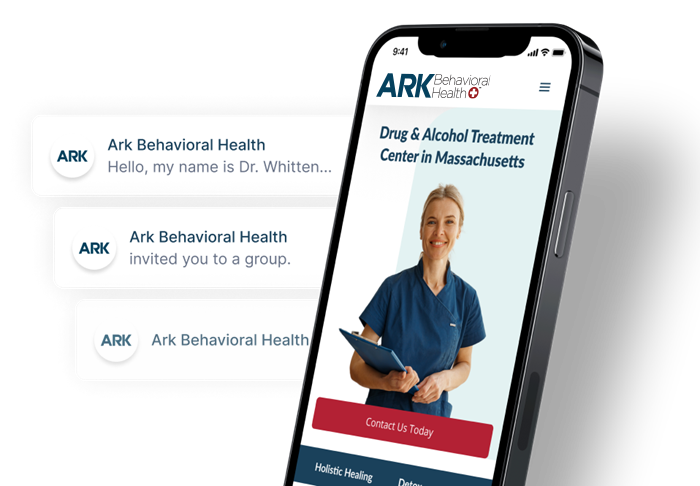Fentanyl Abuse & Addiction | Side Effects, Overdose Signs, & Treatment Options
- What Is Fentanyl?
- Addiction Side Effects & Signs
- Fentanyl Overdose
- Withdrawal & Detox
- Addiction Treatment
- Fentanyl FAQ

According to the National Institute on Drug Abuse (NIDA), overdose deaths involving fentanyl or fentanyl analogs have been on the rise over the past two decades.
In fact, during 2018 alone, more than 31,000 overdose deaths involving synthetic opioid analgesics like fentanyl were recorded in the United States.
Fentanyl is one of the most dangerous opioids available, and it has a high potential for addiction. Fortunately, effective substance abuse treatment is available to help people who become addicted to fentanyl.
What Is Fentanyl?
Fentanyl is a synthetic opioid, which means it is man-made. It’s prescribed by medical professionals to treat severe pain or chronic pain on a short-term basis.
Fentanyl is available in the form of:
- nasal sprays
- tablets
- transdermal patches—Learn more about Fentanyl Patch Abuse
- lozenges (lollipop)—Learn more about Fentanyl Lollipops
Medical professionals may also use fentanyl together with other medications for anesthesia or as pain relievers for cancer pain.
Fentanyl brand names include:
- Actiq
- Duragesic
- Sublimaze
- Subsys
- Abstral
- Lazanda
This drug can be made and sold illegally as well, and some fentanyl street names include:
- apache
- china girl
- china white
- dance fever
- jackpot
- tnt
Fentanyl is highly potent. It is 50 times stronger than heroin and 100 times stronger than morphine. Thus, fentanyl use can get people very high with a just small amount. However, fentanyl’s potency also makes it more dangerous than heroin and morphine.
Fentanyl Addiction Side Effects & Signs
The signs of fentanyl addiction may vary from one person to the next. In general, you may be able to tell that someone has become addicted to fentanyl by looking for signs of recent drug use, as well as long-term addictive behaviors.
Some of the fentanyl side effects that may indicate recent drug use include:
- euphoria, usually followed by confusion or depression
- slow, shallow breathing
- trouble staying awake or drowsiness
- changes in speech
- trouble walking
- paranoia and anxiety
- hallucinations
- skin irritation
Learn more about Fentanyl Warnings & Side Effects
You can verify that someone has used fentanyl recently with fentanyl test strips. However, many users may be unwilling to take a test.
Learn more about Fentanyl Test Strips
Even if you don’t notice the signs of recent fentanyl use, you may still see other signs of fentanyl addiction:
- taking fentanyl in larger amounts than prescribed
- being unable to stop using fentanyl
- spending a lot of time trying to obtain fentanyl illegally
- talking about fentanyl or other opiates frequently
- Experiencing problems at home, work, or school
Fentanyl & The Risk Of Overdose
One of the aspects of fentanyl that makes it so dangerous is its strength. Even in small amounts, this drug can be fatal.
Single fentanyl patch doses can lead to severe symptoms when used inappropriately. In addition, it is often mixed with other drugs recreationally, including cocaine and heroin.
You may also encounter fentanyl in weed. Mixing these substances together makes the likelihood of overdose and other complications even greater.
Although fentanyl is often bought and sold deliberately, it may also be added to other illegal street drugs, like cocaine and heroin, without the user’s knowledge. This may be done for the purposes of encouraging addiction or even with the intent to harm the user.
Fentanyl Overdose Signs
Fentanyl overdose is a medical emergency. If you believe a loved one has overdosed on fentanyl, you need to seek professional help immediately.
Some of the signs of a fentanyl overdose may include:
- confusion
- sleepiness or loss of consciousness
- very slow heartbeat
- dangerously low blood pressure
- respiratory depression, or slow breathing or stopped breathing
- bluish tint to lips or nails because of oxygen deprivation
- weak muscles
- constricted pupils
Fentanyl overdose can be treated with a reversal medication called naloxone. Call 911 for assistance if your loved one is experiencing any fentanyl overdose signs.
Fentanyl Withdrawal Symptoms & Detox
Using fentanyl or other opioids on a regular basis leads to physical dependence, even if you use it for only a short period of time.
As a result, users of fentanyl tend to experience severe withdrawal symptoms when they stop using this drug, which may include:
- loss of appetite
- bone pain
- muscle pain
- insomnia
- irritability
- sweating
- anxiety and confusion
- abdominal pain
- constipation
- tremors
- rapid breathing
Some users of fentanyl may have more severe symptoms, such as seizures. Because fentanyl withdrawal can be severe and even dangerous, professional detox programs are recommended.
A professional detox program provides you with the health care resources needed to minimize withdrawal symptoms, prevent any serious health complications, and prepare you for addiction treatment.
Detox programs typically include medical supervision, medications, and psychological support.
Learn more about Fentanyl Withdrawal
Fentanyl Addiction Treatment Options
Fentanyl addiction can be treated effectively in rehab. Several different treatment options are available to help improve your mental health and overcome addiction.
Some of the treatment options that may be available include:
- Inpatient/residential treatment—Inpatient programs are often the best choice for people struggling with fentanyl addiction. These programs are highly-structured, immersing the patient in treatment so they can recover fully before returning to society.
- Outpatient treatment—Outpatient treatment allows more freedom to patients with fentanyl addiction, requiring them to attend a specific number of treatment sessions each week.
- Medication-assisted treatment (MAT)—MAT is a specialized program that addresses opioid addiction. Prescription drug medications like methadone are prescribed to lower dependence. These medications are also combined with behavioral therapy.
If you think you or a loved one has opioid use disorder related to fentanyl abuse, contact us today to learn more about our treatment centers.
Fentanyl FAQ
Is Fentanyl An Opioid Or Opiate?
Fentanyl is a synthetic opioid. It’s not considered an opiate because fentanyl is produced in a lab. Opiates, on the other hand, are naturally occurring substances.
Read ‘Is Fentanyl An Opioid Or Opiate?’ to learn more
How Is Fentanyl Abused?
You’re abusing fentanyl if you use the drug in any manner not prescribed by your doctor. However, the most common ways to abuse fentanyl include injecting it, snorting it, and smoking it.
To inject fentanyl, most people remove the gel or liquid from a fentanyl patch, dilute or melt it, and use a needle to inject the substance into a vein.
To snort fentanyl, some people use an illegally made fentanyl powder, while others snort the gel or liquid removed from fentanyl patches.
To smoke fentanyl, most people heat the gel or liquid from fentanyl patches and inhale the smoke and vapor.
All of these methods pose serious health risks, including overdose and death.
Learn more about the dangers of Injecting, Snorting, & Smoking Fentanyl
How Long Does Fentanyl Stay In Your System?
You can expect fentanyl to stay in your system for between 24 and 72 hours after last use. Fentanyl can be detected on blood tests for up to 48 hours, urine tests for up three days, and hair tests for up to three months.
Read ‘How Long Does Fentanyl Stay In Your System?’ to learn more
Can You Tell If Counterfeit Pills Are Laced With Fentanyl?
The only way to tell if counterfeit pills are laced with fentanyl is to have them tested with fentanyl test strips.
The Centers for Disease Control and Prevention (CDC) warn that even though these strips can detect fentanyl, they may not be able to detect more potent fentanyl analogues like carfentanil.
Counterfeit pills are made to look like real prescription drugs, so it’s hard to tell that they aren’t authentic. The only way to know for sure that they’re safe is to get them from a registered pharmacy with a prescription.
Written by Ark Behavioral Health Editorial Team
©2024 Ark National Holdings, LLC. | All Rights Reserved.
This page does not provide medical advice.
Centers for Disease Control and Prevention (CDC) - Reported Law Enforcement Encounters Testing Positive for Fentanyl Increase Across US
Centers for Disease Control and Prevention (CDC) - Synthetic Opioid Overdose Data
Drug Enforcement Administration (DEA) - Fentanyl is a synthetic opioid
National Institute on Drug Abuse - Overdose Death Rates
National Institutes of Health (NIH) - Street & Commercial Names


Questions About Treatment?
Ark Behavioral Health offers 100% confidential substance abuse assessment and treatment placement tailored to your individual needs. Achieve long-term recovery.
100% confidential. We respect your privacy.
Prefer Texting?
Our friendly support team is here to chat 24/7. Opt out any time.







 Learn More
Learn More








